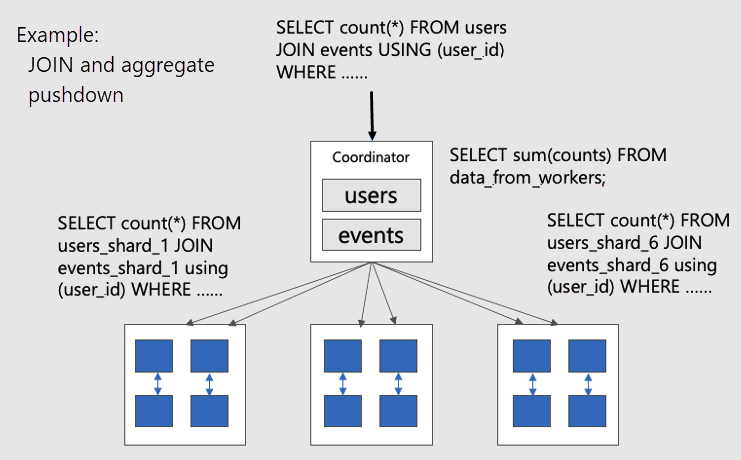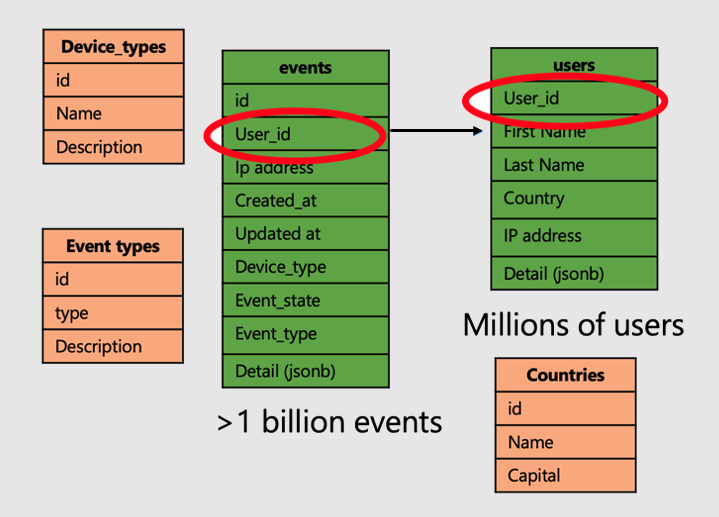Model real-time analytics apps in Azure Cosmos DB for PostgreSQL
APPLIES TO:
Azure Cosmos DB for PostgreSQL (powered by the Citus database
extension to PostgreSQL)
Colocate large tables with shard key
To pick the shard key for a real-time operational analytics application, follow these guidelines:
- Choose a column that is common on large tables
- Choose a column that is a natural dimension in the data, or a central piece
of the application. Some examples:
- In the financial world, an application that analyzes security trends would
probably use
security_id. - In a user analytics workload where you want to analyze website usage
metrics,
user_idwould be a good distribution column
- In the financial world, an application that analyzes security trends would
probably use
By colocating large tables, you can push SQL queries down to worker nodes in parallel. Pushing down queries avoids shuffling data between nodes over the network. Operations such as JOINs, aggregates, rollups, filters, LIMITs can be efficiently executed.
To visualize parallel distributed queries on colocated tables, consider this diagram:

The users and events tables are both sharded by user_id, so related
rows for the same user ID are placed together on the same worker node. The
SQL JOINs can happen without pulling information between workers.
Optimal data model for real-time apps
Let's continue with the example of an application that analyzes user website visits and metrics. There are two "fact" tables--users and events--and other smaller "dimension" tables.

To apply the super power of distributed tables on Azure Cosmos DB for PostgreSQL, follow the following steps:
- Distribute large fact tables on a common column. In our case, users and
events are distributed on
user_id. - Mark the small/dimension tables (
device_types,countries, and `event_types) as reference tables. - Be sure to include the distribution column in primary, unique, and foreign key constraints on distributed tables. Including the column may require making the keys composite. There's need to update keys for reference tables.
- When you're joining large distributed tables, be sure to join using the shard key.
-- Distribute the fact tables
SELECT create_distributed_table('users', 'user_id');
SELECT create_distributed_table('products', 'user_id', colocate_with => 'users');
-- Turn dimension tables into reference tables, with synchronized copies
-- maintained on every worker node
SELECT create_reference_table('countries');
-- similarly for device_types and event_types...
Next steps
Now we've finished exploring data modeling for scalable apps. The next step is connecting and querying the database with your programming language of choice.